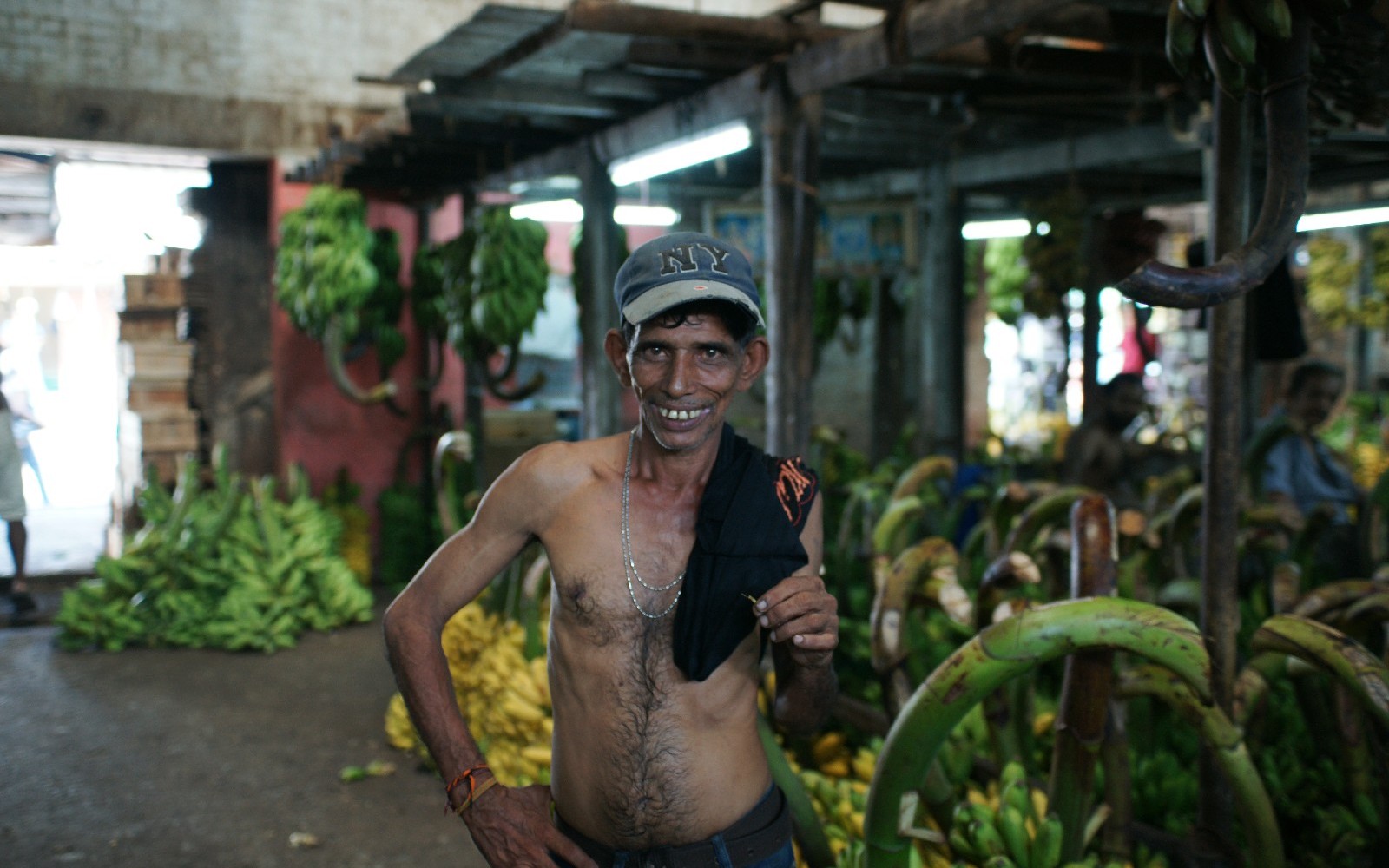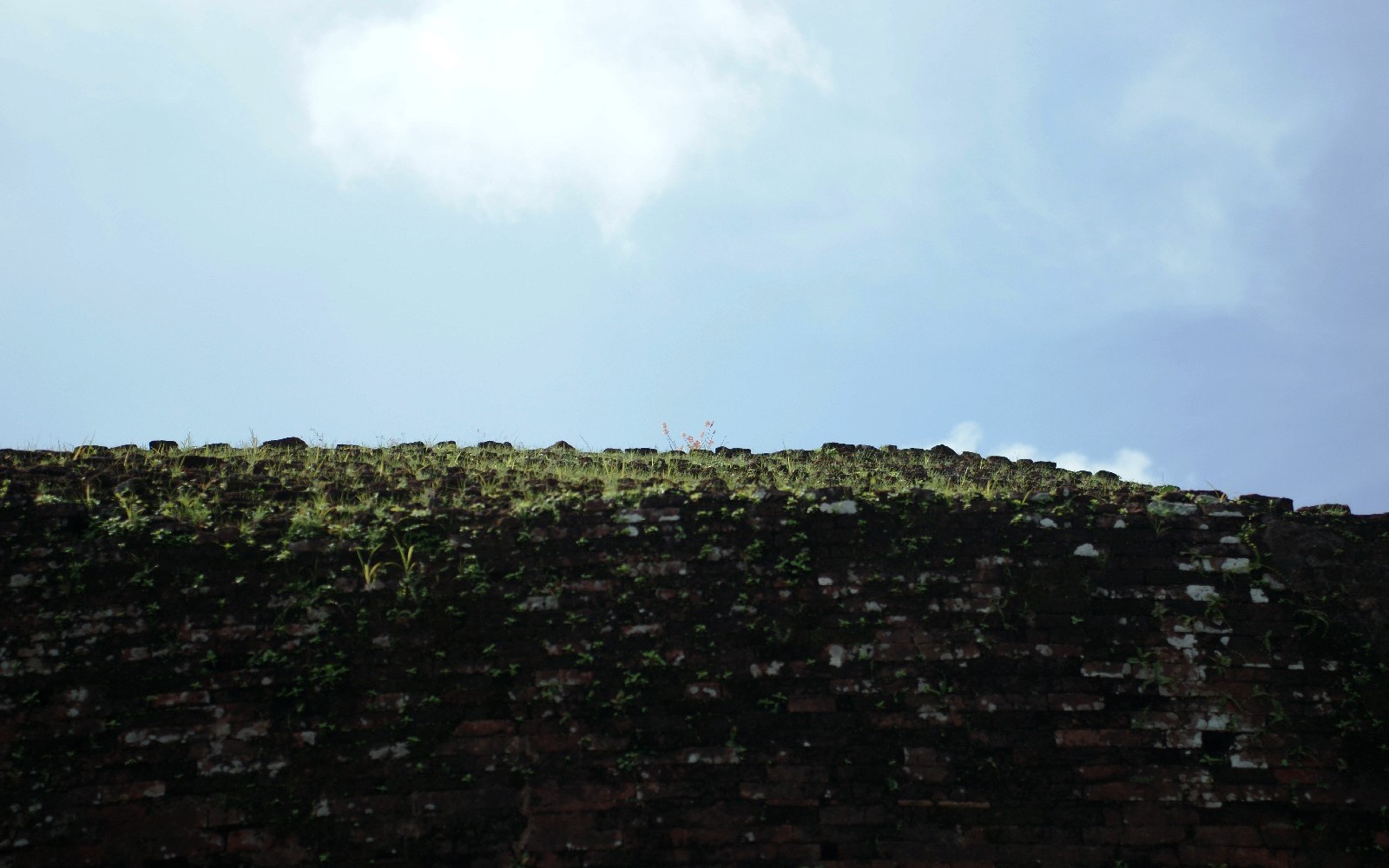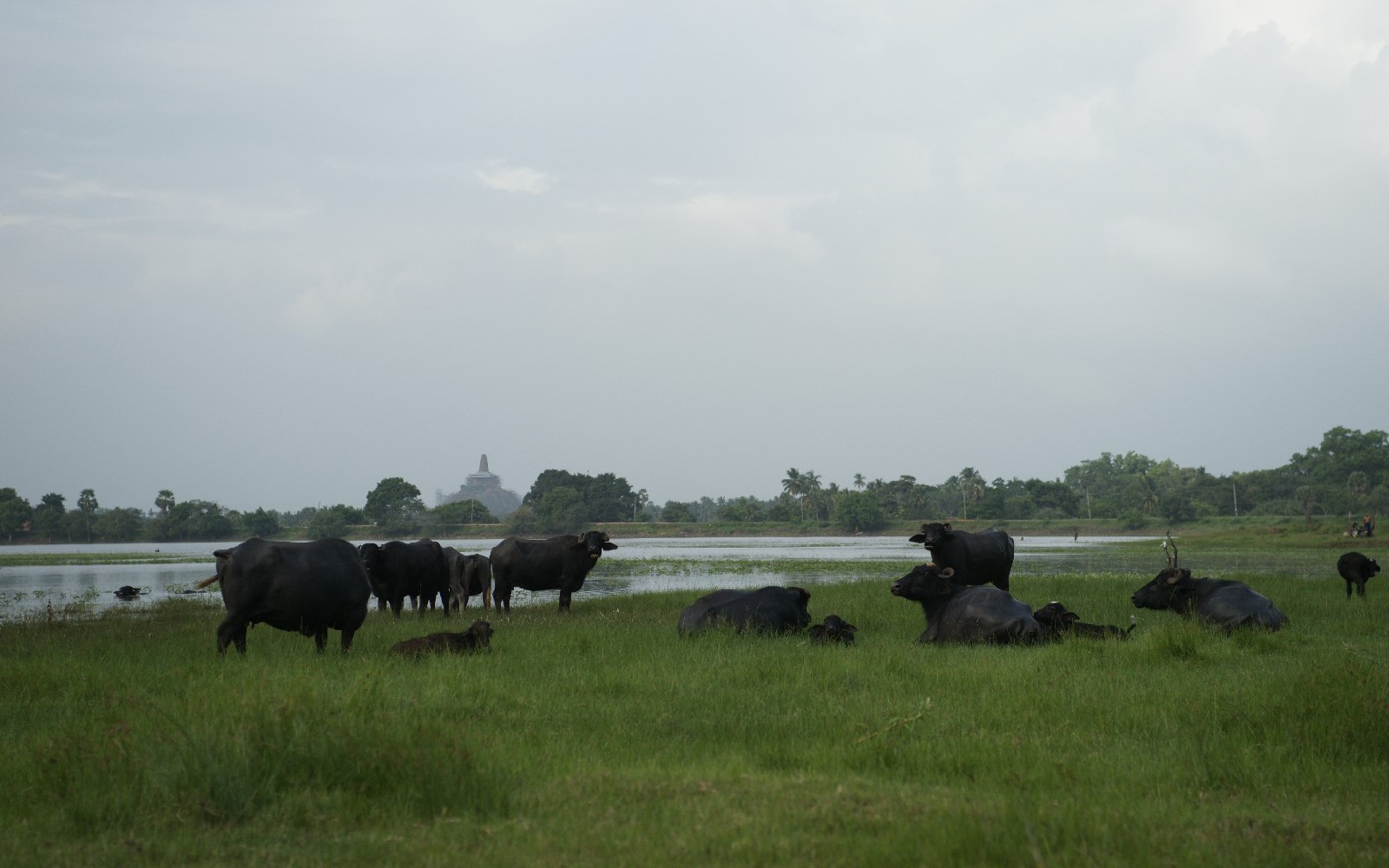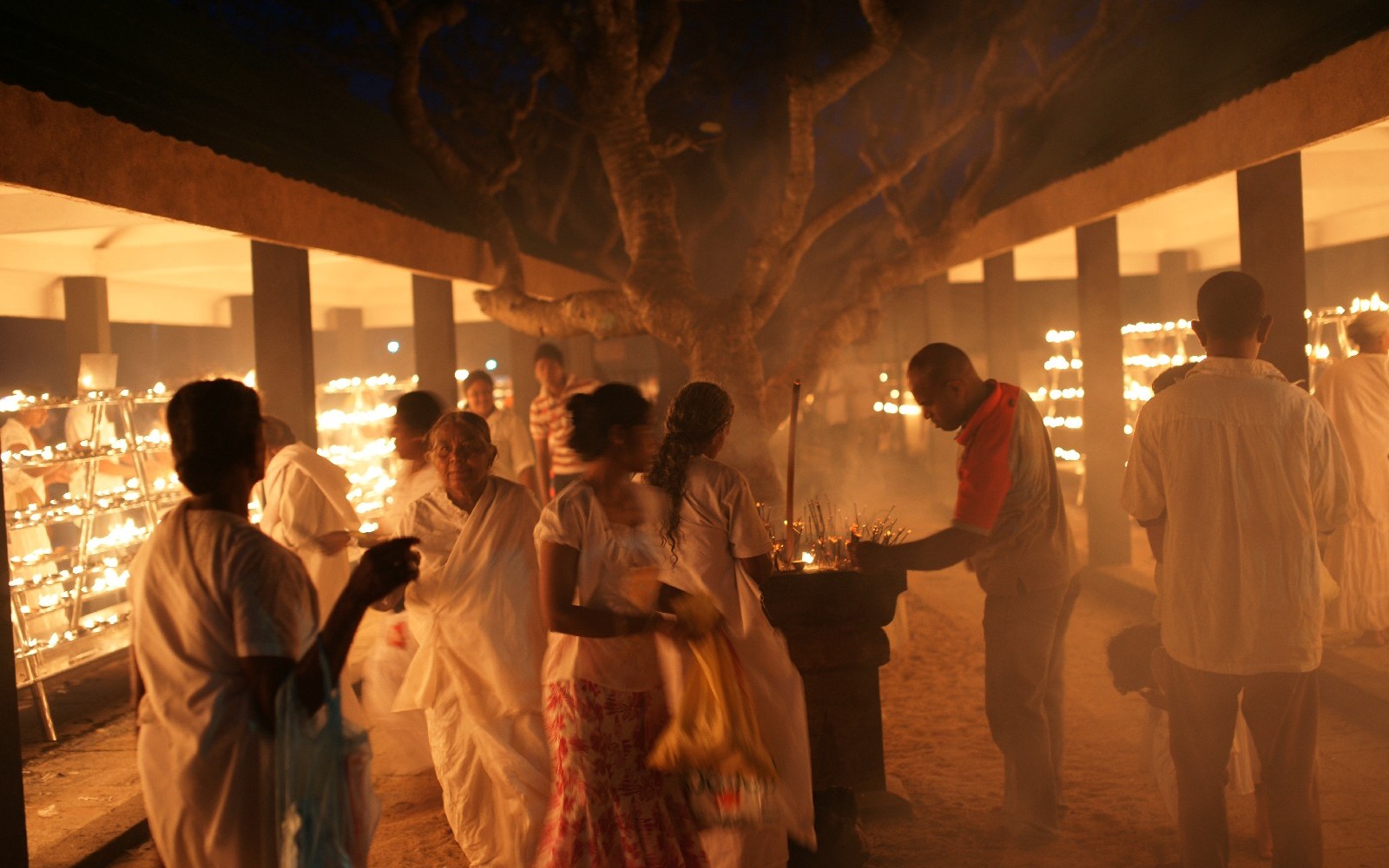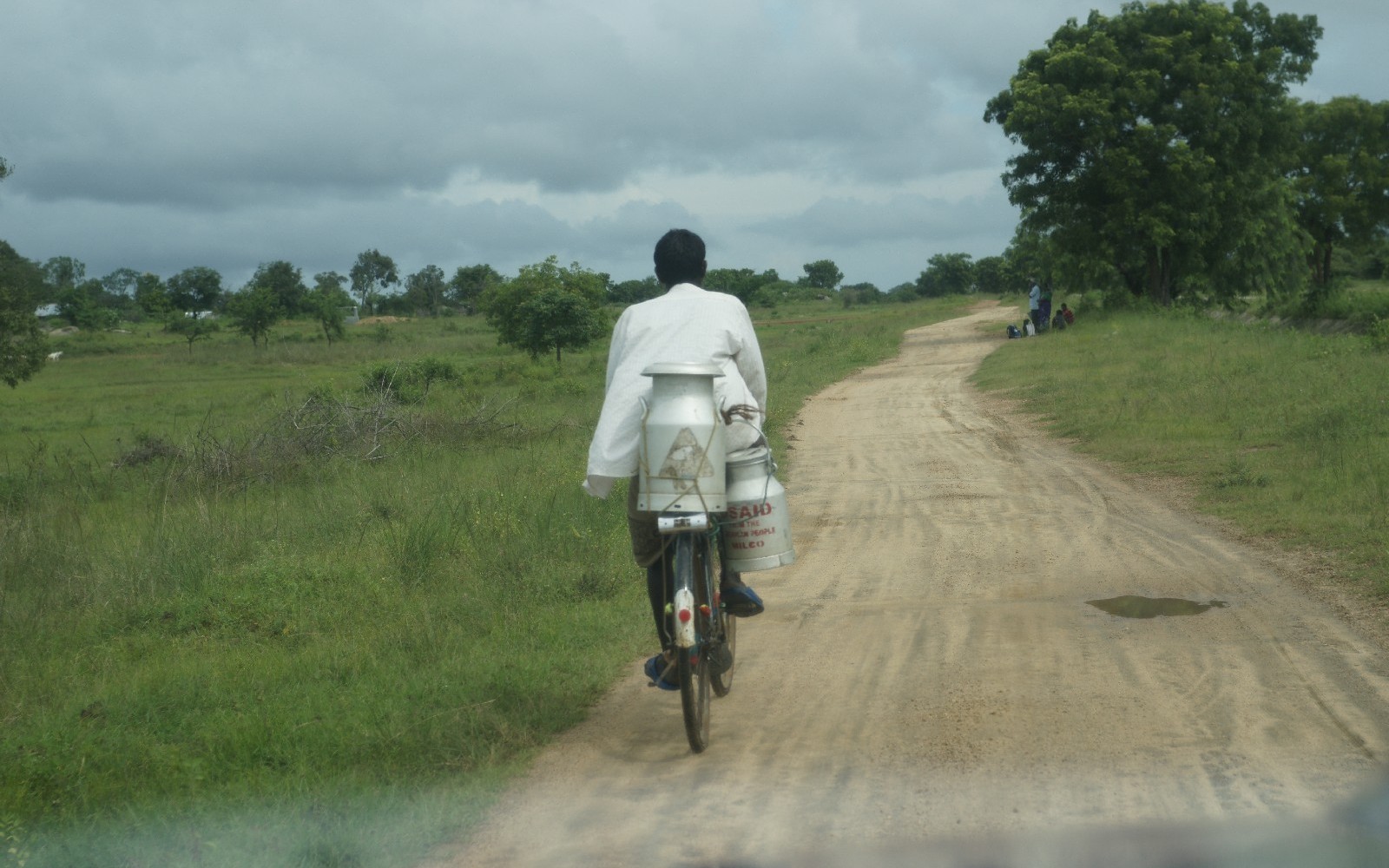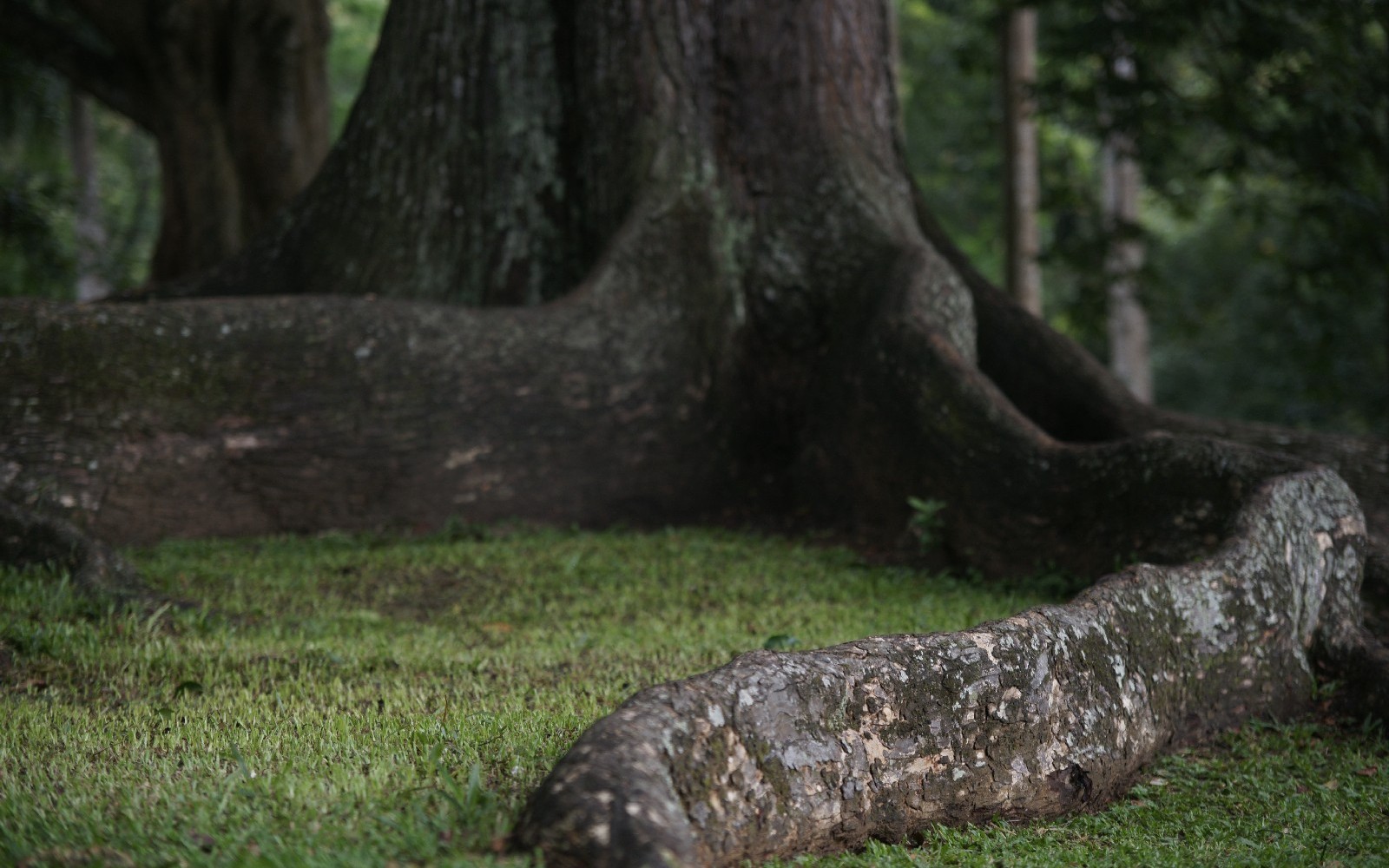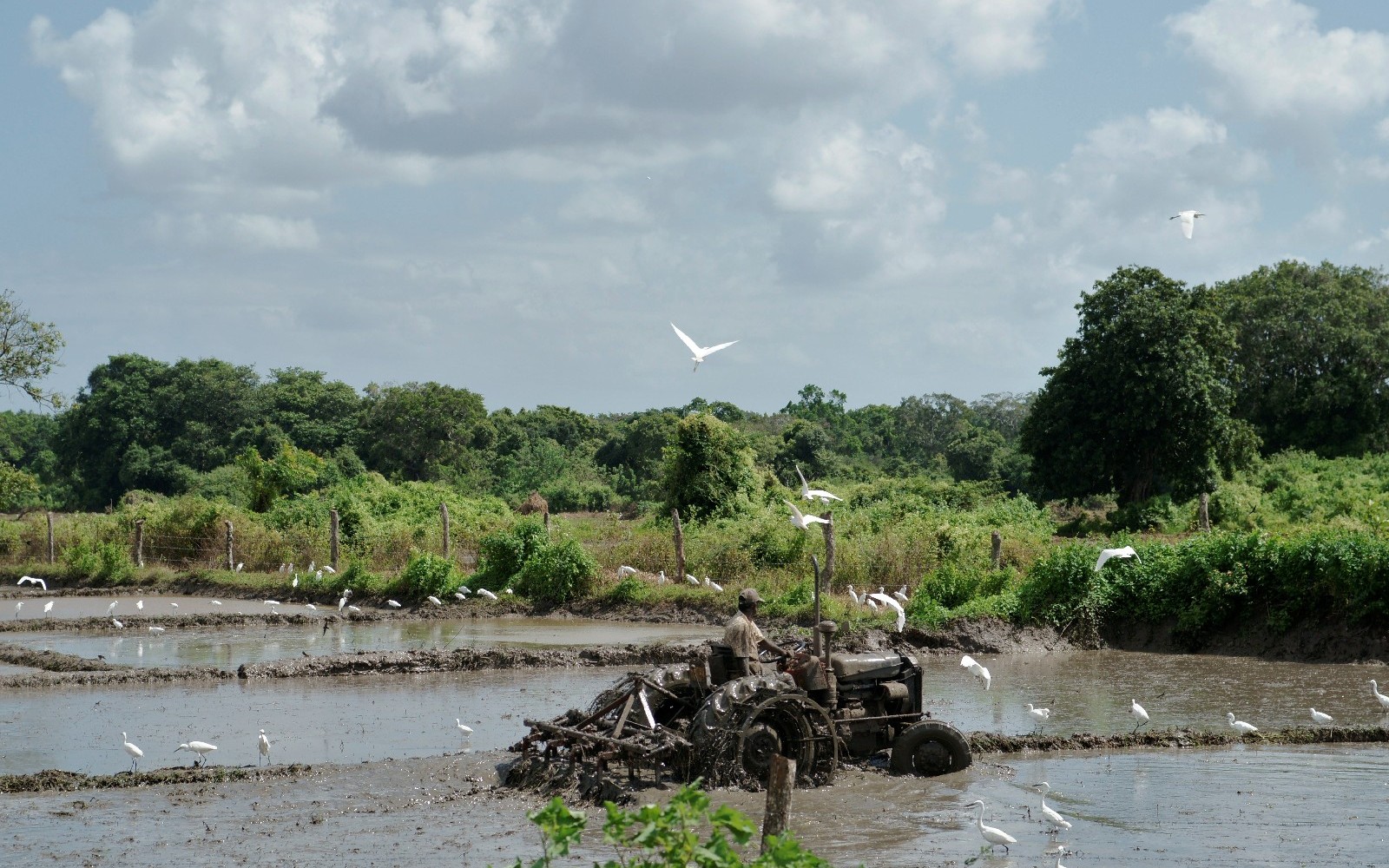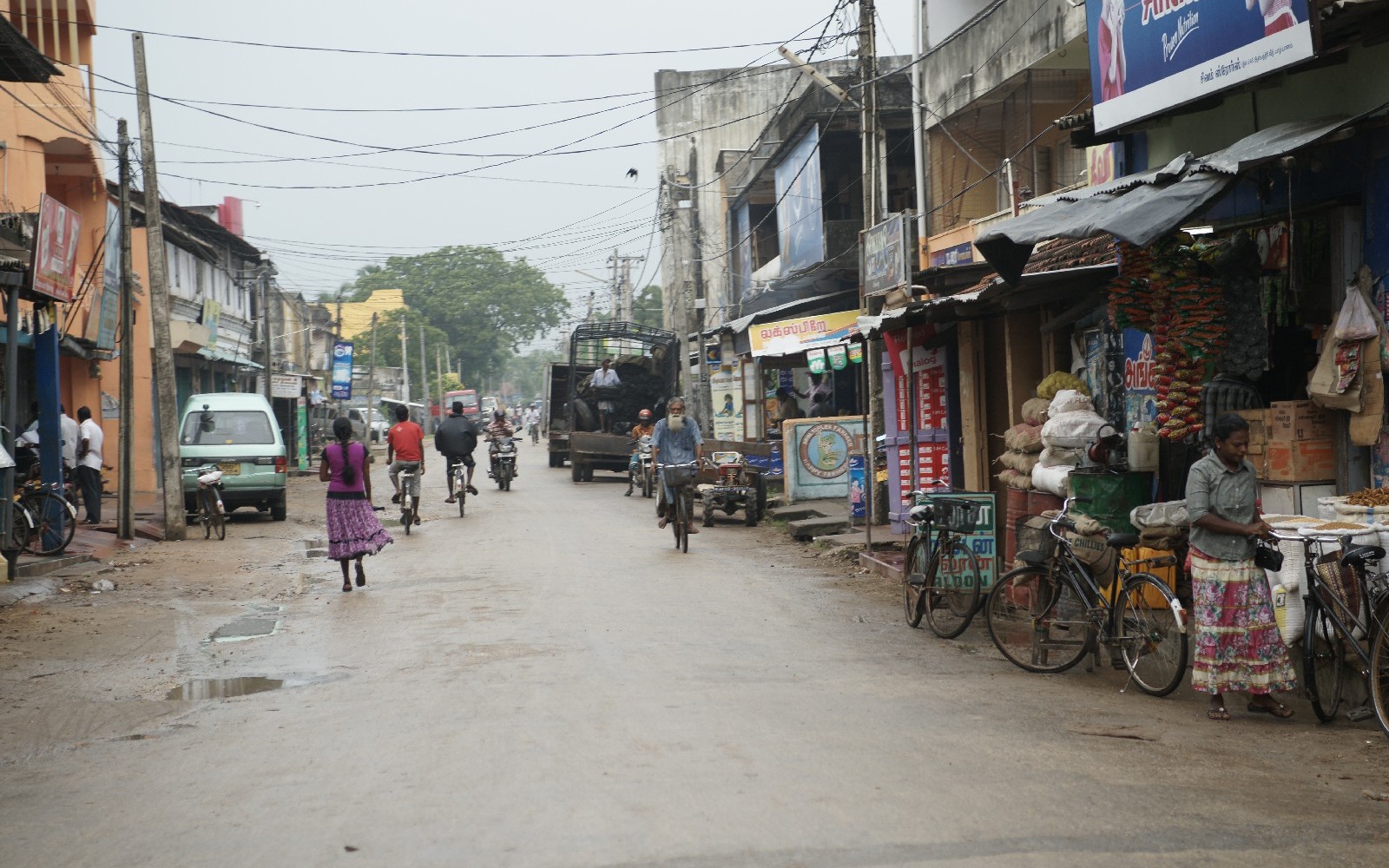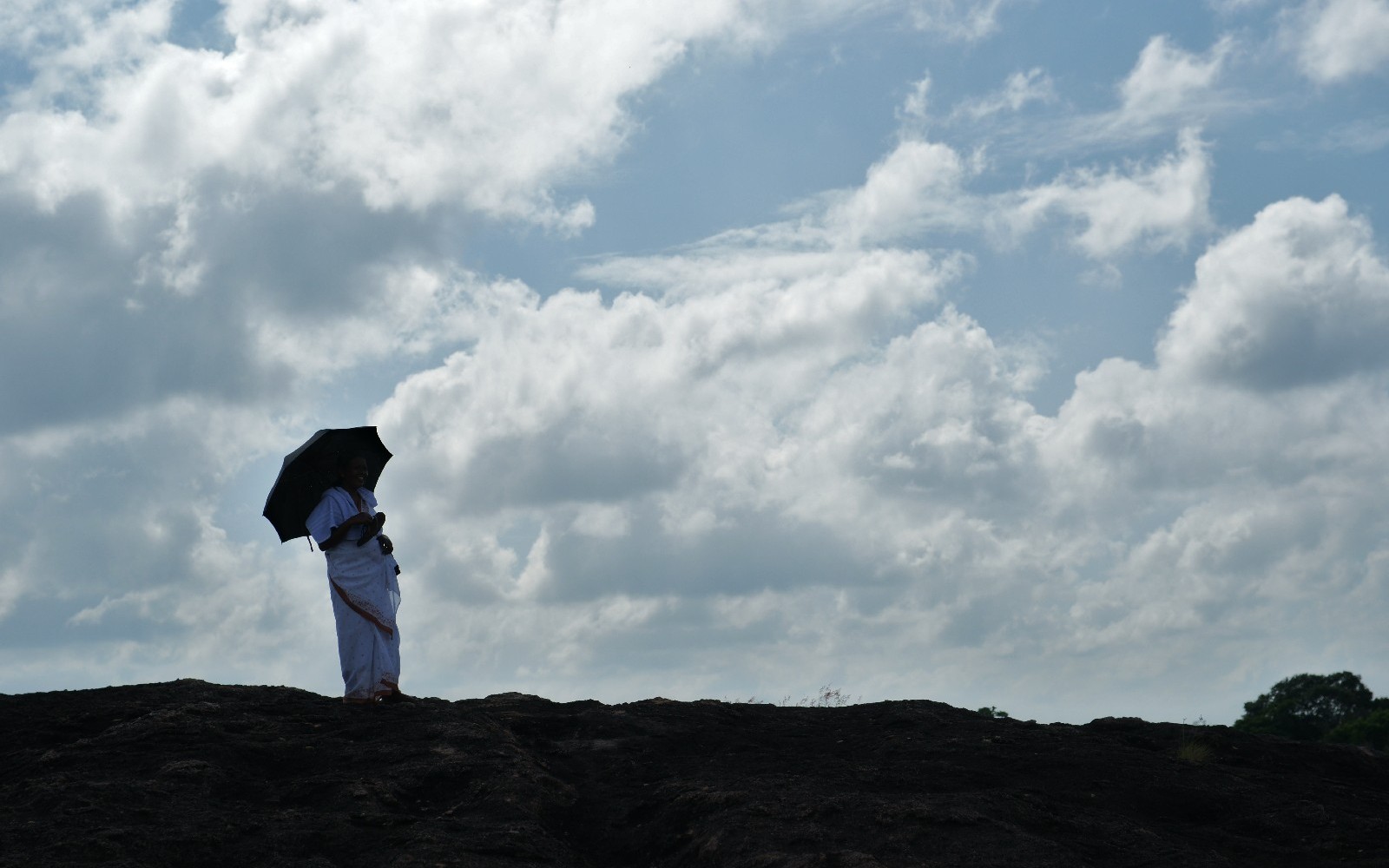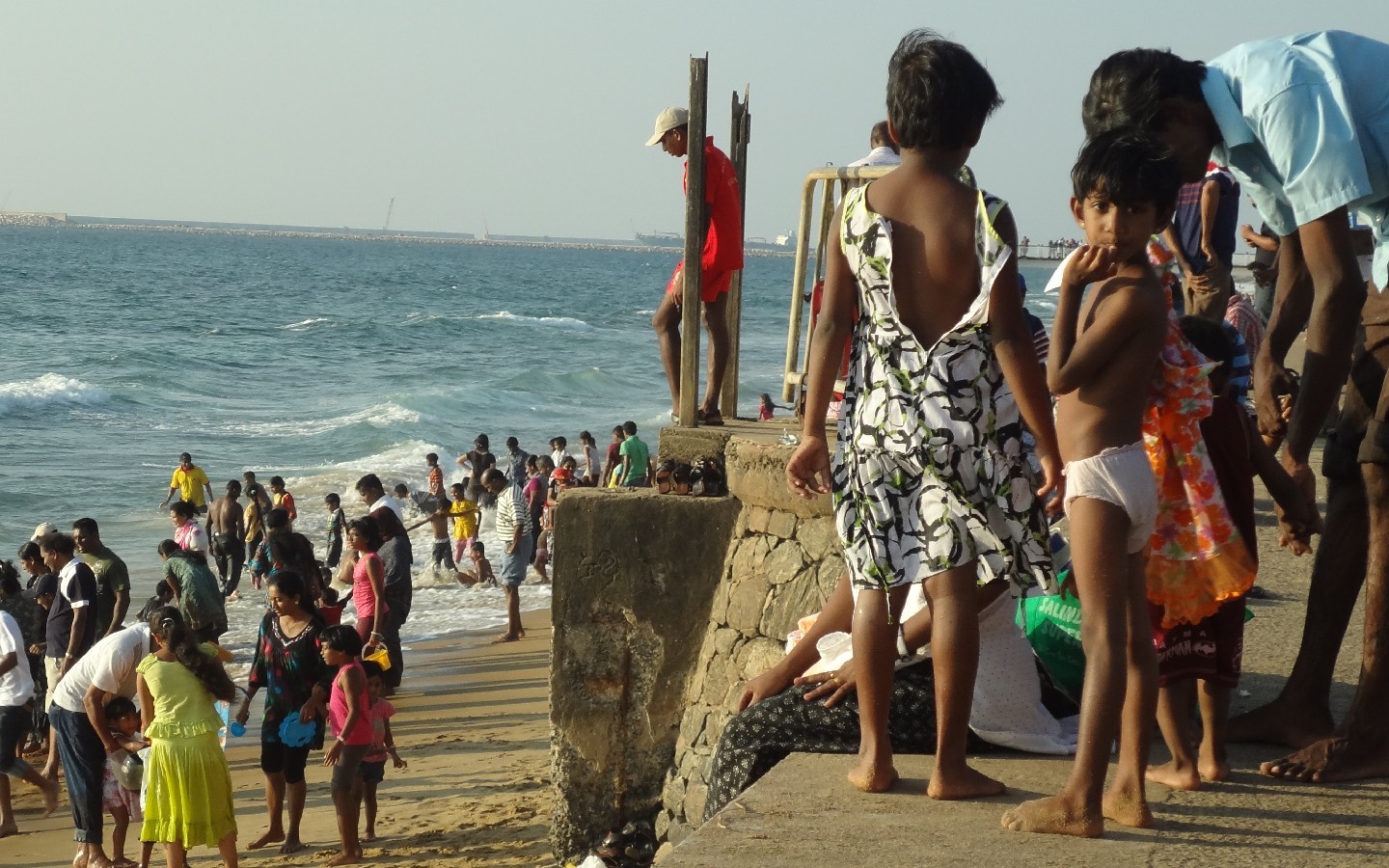The situation: The final stages of the Sri Lankan Civil War created 300,000 internally displaced persons (IDPs) who were transferred to camps in Vavuniya District and detained there against their will. This process, together with conditions inside the camps and the slow progress of resettlement attracted much concern and criticism from inside and outside Sri Lanka.
Although camps have been removed as of April 2015 as many as 13,459 families, accounting for 44,934 persons, were yet to be resettled and houses for them are still under construction.
The Omadiyamadu villagers have been relocated many times during the civil war and live again in temporary shelters in 2011. The villagers have limited access to electricity. Some have solar energy panels that were provided to them mounted on their roofs. They also have limited access to fresh water during the dry season.
Some of the people have lived in their temporary homes for as long as 10 years -simple structures made of wood and metal sheets. Their huts are 6 to 12 square meters; they sleep on the mud floors, mostly on straw mats. Poisonous snakes are a constant threat because the huts do not provide any kind of protection.
Moreover, as there is no money for lamp oil, the villagers cannot leave a lamp on overnight to fend off the snakes and rats. I met a family whose son was suffering from malaria. Doctors and medicine are far away, so often people die from malaria or dengue. The family of this malaria sick boy does not have a mosquito net, so the rest of the family could be next.
The villagers don’t trust the peace; they do not believe that the constant moving and resettling during the civil war might finally have found an end.
Old and young women who lost their husbands and often also their children seemed to be left alone with their daily duties. Since everyone has to struggle for their day to day survival, the woman-headed households are at the end of the chain. They are avoided by the other villagers, considered to attract bad luck. Another big threat for the Omadiyamadu villagers is the wild elephants that come at night and destroy their paddies and fields and attack their flimsy homes to get to the families’ food storage inside. People do get killed by elephants regularly. People are scared of them and they place their hopes on the government to build elephant fences. All of this is happening 20 kilometers away from the big city of Batticaloa.
Batticaloa was once a LTTE headquarters. The villagers were mostly very shy, but answered my questions politely. People are not used to speaking openly: they are still scared and suspicious. The people could not speak out when the LTTE was in charge and they still think they cannot speak out because the government might not like what they say. The people in the east of Sri Lanka have to get along with each other, whether they were LTTE soldiers, former LTTE leaders or just civilians. Now they are supposed to build a village together and live in peace. Right now, killers, soldiers, abductors and victims live door to door. Examples of self-administered justice is endless and not publicly talked about.
There is the hidden issue of Singhalese who envy the attention and financial funding Tamil families are getting from foreign NGOs. Since regular Singhalese families also went through a lot of hardship during the civil war, this creates new tensions as we speak.
In the Vavuniya district many areas have just been cleared by the government, so that the Tamils can move back to their land or home – at least in theory. Vavuniya also was a LTTE headquarters and was cleared after the East Coast Batticaloa Region.
Tamil people are now slowly moving back and need support to get their lives started again. Some families I visited in this area were lucky. They could go back to their formerly owned land and start rebuilding their lives. They all have to rebuild their homes, work their lands, plant crops and arrange themselves with their new neighbors.
The young children with them are traumatized by war: they hide by every loud bang and cling to their parents. They all have been through hardship, like having not enough to eat and living under poor hygienic conditions. During the war no education was possible for the children. Some of their kids were born in the infamous Manik Farm an Internally Displaced Persons (IDP)camp, under extreme poverty with soldiers patrolling and overseeing their every move.
A Tamil father said, if the war starts again, he would not resettle anymore. He wants to die here in his fields -he is 32 years old. For him, it is the end of all resettling -he will stick to his land and fight for it.
In the Vavuniya area, the elephants are a constant threat to the farmers. The father sleeps outside in a field hut, to fend off elephants together with his dog. The man makes noise by banging stones and sticks on a former ammunition metal box and lights up fireworks to scare the elephants away. This family has an academic background: the old father -war injuries left him disabled and depending on his son’s family -was a teacher. He spoke fluent English with me and told me that they are listening all the time to radio -to follow the news. During the war, there was no source of information no news, no radio, and no newspapers – and people spent a lot of time in bunkers. They do not trust the peace now.
Nearby is a military check post -all military check posts are run by Singhalese soldiers, mainly youngsters from the south of Sri Lanka. They cannot communicate with them (different language) so just a rudimentary exchange is possible.
Otherwise the people stay worlds apart and do not like each other, to say the least. The people in this area are driven to succeed -the father rebuild a banana farm in 6 months. The Tamils’ success often makes the guarding soldiers jealous and aggressive. There are unreported cases of rape and extortion in those little villages.
I continued my journey to the north, towards Jaffna. On the way I could see buildings that had been shelled and destroyed by bombing. I saw de-mining cars from foreign countries, signs warning of landmines, coconut tree stumps due to heavy shelling they were just the sad reminders of the war. We drove through Killinochchi and the Elephant Pass. Military police controls, stopped vehicles on the road side – and not just for speeding.
We stopped in Pallai briefly, to visit one family that lives in a NGO Project area. A formerly nice big building was now just a bombed out concrete shelter for the family who had once made this place their home during the peace time. They then had to resettle and after they returned, they found that another displaced family had moved into the barrack. Although the windows are all blown out and the surrounding land has to get worked into farming grounds back again, they are still lucky to have their house and fields back.
In Tellippalai. people here newly resettled, some of them just coming from Manik Farm, the infamous refugee camp to the east of Vavuniya. Many of them have been resettled many times during the war and do not trust the peace. The families each got a piece of land assigned to them by the government. I met a young couple, they live in a simple wood and metal sheet shack of maybe 6 square meters, provided by the government. Some of the newly resettled just arrived 4 days ago. The only thing they own is the clothes on their backs. No farming tools, no kitchen utensils -not even the simplest kind.
The young couple married last year. The 24-year old husband is earns money as a field worker in the village; his wife is 21 years old and earns money doing domestic work. During the war, many very young people married, so as not to be drawn forcefully into the LTTE troops. At least that was what they thought. Now, many of those “war couples” have gotten divorced. The young couple does not know a world without civil war, as they grew up in it all their lives. They spent their childhood in bunkers and refugee camps.
The north east of Jaffna, Punkudutivu. The islands were once as beautiful and culturally rich and advanced as the city of Jaffna. We saw the remains of old villas and mansions -all bombed and destroyed with trees growing out of them. They probably will be all torn down and that part of Tamil history and culture will be lost.
The people I met had sad stories to tell. One mother -29 years old -lost her husband 2009 due to shelling in the last fighting on the east coast in the Mullaittivu district. A shell killed her husband and injured her 6-year old son. She had to manage to get help for her 4-year old son and her 5-year old daughter. She somehow managed to get him into the hospital, but his leg is still disfigured and both children seemed traumatized by this experience. They had difficulties to talk about it; they both hung on their mother while we spoke. The mother will not be able to remarry -even though she is young and it would help her to get a second husband. But Tamil culture forbids a second marriage. So now she lives with her mother and her brother. Her brother, 28 years old, was forcefully drawn in 2009 by the LTTE. They came at night and snatched him. He spent 7 months as a soldier for them, most of the time being in training -it was during the last months of hard fighting in 2009. Neither his family nor his wife knew if he was alive or dead, there was no record -and there are no records of all the people who did service for the LTTE -or who abducted him.
After the fighting was over in 2009, he confessed and the government put him in an ex-LTTE combatant detention camp for 2 years and 8 months. The government did not inform the family or his wife about his whereabouts. No one knew if he was dead or alive for over 3 years. Just a week before I interviewed them, they released him from a detention camp. He was there with 22 others and they were all released on the same day. The brother could not escape during his service with the LTTE because they would have come after his family and would have probably killed them all.
The newly set up family: the widow with two children, her ex-LTTE soldier brother, the mother and father live under one roof -in a room of 6 square meters. The family was able to set up a shop with a small loan from an NGO. They are running a successful village kiosk. They put their money together as one income which is supports every member of the family.
The newly released and traumatized brother feels very much responsible to help his extended family, and he is now a fisherman again. I visited a family also in Punkudutivu that could not go back to their homeland, because it is flooded and not usable anymore. So they resettled at another spot on the island -in a nice stone structured building. The family consists of a father, mother, their three children, a neighbor’s son -and their grandfather. The family told me about the land they lost because the structures for keeping salt water and the fresh water separate were bombed during the war and the saltwater has destroyed all the rice paddies and other farm grounds.
The land will be unusable for years. NGOs provide a huge black freshwater tank for every Tamil family on the island. Since there is no fresh water on all those islands around Jaffna, water needs to get provided daily by tractor pulling a giant water tank, making all the people dependent upon a tractor arranged by the new government. The tractor goes around the houses and refills their tanks. If the tractor cannot come -due to flooding for example people just have no way to supply themselves with drinking water anywhere on the island. Moreover, there is no electricity on the island, just oil lamps.
Another big issue on the peninsula of Jaffna is education. There seemed to be schools, but no teachers. The teachers do not teach in Tamil language anymore. One teacher is teaching three days in one school, 1 day in another and 2 more days in yet a different school. Education is the most crucial thing for the families and they really feel set back if they cannot send their children to school. People do not trust the peace, they are still on their toes living a day-by-day existence.







